
电子纺织器件
全新正版 极速发货
¥ 40.09 4.5折 ¥ 89 全新
库存2件
作者李乔,王玺
出版社东华大学出版社
ISBN9787566921338
出版时间2023-01
装帧平装
开本16开
定价89元
货号1202898748
上书时间2024-11-16
- 最新上架
商品详情
- 品相描述:全新
- 商品描述
-
商品简介
本书系统讲述电子纺织器件的相关技术,涉及纺织结构的电极、传感器、电路、电连接、能量转换与存储器件,以及用于开发智能电子纱线的先进纱线加工技术。基于先进的纺织加工技术,重点介绍纺织电极、传感器和电路的材料、加工、结构、实验表征与力电性能。基于先进的纤维/纱线制备技术,详细阐述不同材料与结构的纤维基能量转换与存储设备的性能。为使读者更好地掌握纺织传感器知识并具有实际应用能力,本书还列举了纺织传感器在可穿戴领域的应用。
本书可作为高等院校纺织专业智能纺织及相关课程的教学用书,对从事智能纺织品、可穿戴技术及其开发设计等相关工作的工程技术人员及学者也具有一定的启迪性,还可供“一带一路”沿线国家的纺织专业学生使用。
作者简介李乔
东华大学纺织学院副教授。担任国际电工技术委员会“可穿戴电子设备和技术-电子织物”工作组专家。博士毕业于香港理工大学,致力于纺织基可穿戴电子器件的研究,包括织物传感器、织物电路等。对常用的功能性纺织材料与结构、柔性传感材料,以及织物基的传感单元的结构、力-电-热耦合性能的优化有着丰富的研究经验。
目录Contents
Chapter 1 Fundaments of Electronic Textiles
1.1 Introduction
1.2 Conductive materials
1.3 Textile sensors
1.4 Textile circuits or circuit boards
1.5 Textile sensing networks
1.6 Data processing and communication
1.7 Wearable energy storage
1.8 Applications
References
Chapter 2 Textile Electrode Technology
2.1 Introduction
2.2 Methods and materials
2.3 Results and discussions
2.4 Conclusions
References
Chapter 3 Resistive Textile Sensors
3.1 Brief introduction of textile resistive sensors
3.2 Resistive textile strain sensors: Materials, processing, principle and applications
3.3 Applications: Smart apparels integrated with textile strain sensors
3.4 Applications: Textile pressure sensors for smart protective clothing against impact loading
3.5 Summary
References
Chapter 4 Textile Circuit Technologies
4.1 Introduction
4.2 Printing technology for arbitrary structure
4.3 E-broidery (machine sewing) technology for arbitrary structure
4.4 Weaving technology for non-arbitrary structure
4.5 Flexible interconnection technologies
4.6 Conclusion
References
Chapter 5 Stretchable Woven Fabric-based Circuits
5.1 Textile yarns
5.2 Conductive yarns
5.3 Woven structures
5.4 Fabrication
5.5 Electro-mechanical properties of woven fabric circuits
5.6 Summary
Reference
Chapter 6 Knitted Circuits: Materials, Structures and Manufacturing
6.1 Introduction
6.2 Knitted circuits with knitting technology
Reference
Chapter 7 Knitted Circuits: Performances
7.1 Introduction
7.2 Morphology
7.3 Resistance
7.4 Uni-directional tensile properties
7.5 Three-dimensional punching properties
7.6 Washing property
7.7 Parameter effects
Reference
Chapter 8 Other Stretchable Electronics
8.1 Introduction
8.2 Metal films on an elastic substrate
8.3 Non-coplanar mesh design
8.4 Horseshoe-like meandering structure
8.5 Connection
8.6 Packaging technologies of FCB(Fabric Circuit Board) assemblies
8.7 Conclusion
References
Chapter 9 Connection Technology
9.1 Bonding connection between flexible knitted circuits and conductive yarns
9.2 Connection between flexible circuit and rigid electronic component
9.3 Connection between flexible circuit and flexible electronic component
References
Chapter 10 Textile-based Energy Convertors
10.1 Introduction
10.2 Textile-based PENGs
10.3 Textile-based TENGs
10.4 Textile-based TEGs
10.5 Conclusions and outlooks
References
Chapter 11 Textile Energy Storage
11.1 Introduction
11.2 Flexible batteries
11.3 Fiber-based supercapacitors (materials, structures, electrodes, properties and principles)
11.4 Fabric-based supercapacitors (materials, structures, electrodes, properties and principles)
11.5 Applications
References
Chapter 12 Yarn Manufacturing Technologies
12.1 Conventional ring spinning technique
12.2 Unconventional spinning technique
12.3 Ring-based spinning technique
12.4 Nanofiber yarn spinning
References
【免费在线读】
相关推荐
— 没有更多了 —










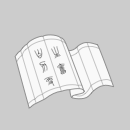










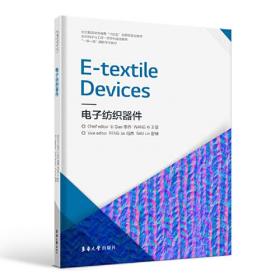
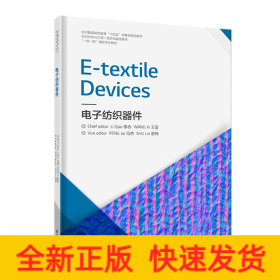

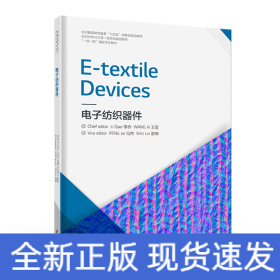
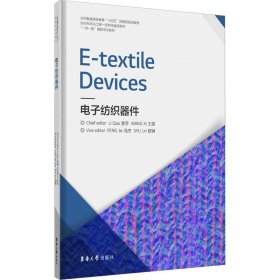
以下为对购买帮助不大的评价